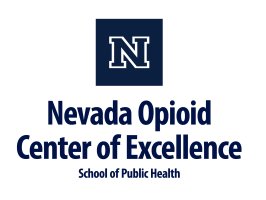What is Stimulant Use Disorder?
Stimulant use disorder (StimUD) is a substance use disorder involving any of the class of drugs that include cocaine, methamphetamine, and prescription stimulants.
Prevalence
Stimulant use is increasing the United States. According to the most recent data available from the National Survey on Drug Use and Health (NSDUH), in 2020, an estimated 5.1 million people aged 12 or older misused prescription stimulants in the past year. Young adults aged 18 to 25 had the highest percentage of prescription stimulant misuse in the past year. Approximately 2.6 million people aged 12 or older used methamphetamine in the past year, an increase of over 36% from 2018. 1.8 million people aged 12 or older used cocaine in the past year, which represented a significant decrease from 2018.
Dangers Associated with Polysubstance Use and Fentanyl
Despite the decline in cocaine use overall, deaths from cocaine, particularly when laced with fentanyl are more than double what they were in 2015. Polysubstance use (the use of more than one substance taken together or within a short time) is common among individuals with stimulant use disorder and overdose deaths linked to psychostimulants have also increased significantly since 2015. The combination of fentanyl and any type of stimulant or combination of stimulants presents a significant danger to individuals with stimulant use disorder.
Types of Stimulants
The National Institute on Drug Abuse (NIDA) and the Substance Abuse and Mental Health Services Administration (SAMHSA) developed the following tables of health risks associated with stimulant misuse.
Cocaine Use
- Withdrawal symptoms may include depression, fatigue, increased appetite, insomnia, restlessness, slowed thinking and movement, and vivid, unpleasant dreams.
- Exposure during pregnancy may result in low birth weight, deficits in self-regulation and attention in school-aged children prenatally exposed, and premature delivery.
- Cocaine use in combination with alcohol consumption presents a greater risk of cardiac toxicity.
Short-term Effects
- Abdominal pain and nausea
- Anxiety
- Enlarged pupils
- Erratic and violent behavior, panic attacks, paranoia, psychosis
- Euphoria
- Headache
- Heath rhythm problems, heart attack
- Increased body temperature, heart rate, and blood pressure
- Increased energy, alertness
- Insomnia, restlessness
- Narrowed blood vessels
- Stroke, seizure, coma
Long-term Health Risks
- Infection and death of bowel tissue from decreased blood flow
- Loss of sense of smell, nosebleeds, nasal damage, and trouble swallowing from snorting
- Lung damage associated with smoking
- Poor nutrition and weight loss
Source: National Institute on Drug Abuse (NIDA), National Institutes of Health; US Department of Health and Human Services.
Methamphetamine Use
- Withdrawal symptoms may include anxiety, depression and fatigue.
- Exposure during pregnancy may result in low birth weight, heart and brain problems, premature delivery, and separation of the placenta form the uterus.
- Methamphetamine use in combination with alcohol consumption may increase blood pressure and may mask the depressant effect of alcohol, increasing the risk for alcohol overdose.
Short-term Effects
- Erratic, aggressive, irritable, or violent behavior (SAMHSA)
- Faster breathing
- Increased blood pressure and body temperature
- Increased wakefulness and physical activity
- Loss of appetite, disturbed sleep patterns, or nausea
- Rapid or irregular heartbeat
Long-term Health Risks
- Anxiety, confusion, and insomnia
- High blood pressure leading to heart attacks, strokes, and death
- Intense itching, causing skin sores from scratching
- Liver, kidney, and lung damage
- Paranoia, hallucinations, mood disturbances, delusions, or violent behavior (psychotic symptoms can sometimes last for months or years after meth use)
- Permanent damage to the heart and brain
- Premature osteoporosis
- Severe dental problems
Source: National Institute on Drug Abuse (NIDA), National Institutes of Health; US Department of Health and Human Services and SAMHSA, Know the Risks of Meth
Prescription Stimulants (Amphetamine (Adderall®) Methylphenidate (Concerta®, Ritalin®)
- Withdrawal symptoms may include
- Exposure during pregnancy may result
- Prescription Stimulant use in combination with alcohol
Short-term Effects
- Increased alertness, attention, energy
- Increased blood pressure and heart rate
- Narrowed blood vessels
- Increased blood sugar
- Opened up breathing passages
- At high doses: Dangerously high body temperature and irregular heartbeat, heart disease, and seizures can occur.
Long-term Health Risks
- Anger
- Heart problems
- Paranoia
- Psychosis
Source: National Institute on Drug Abuse (NIDA), National Institutes of Health; US Department of Health and Human Services and SAMHSA, Know the Risks of Meth
State Opioid Response Grant Program (SOR)
The Substance Abuse and Mental Health Services Administration (SAMHSA), Center for Substance Abuse Treatment (CSAT)’s SOR program supports the continuum of care for stimulant misuse and use disorders, including for cocaine and methamphetamine. The SOR program aims to help reduce unmet treatment needs and opioid-related overdose deaths across America. Though opioid related overdose deaths account for more than 70 percent of all drug overdose fatalities (Mattson et al., 2021), those overdoses often include with other substance misuse including stimulants.
Treatment for Stimulant Use Disorder
Recipients and sub-awardees’ use of funds for this program requires evidence-based treatments, practices, and interventions for OUD and stimulant use disorders. In 2020, the Substance Abuse and Mental Health Services Administration (SAMHSA) developed and published as resource guide for evidence-based treatment of stimulant use disorders.
Effective treatment interventions include:
- Motivational Interviewing
- Contingency Management
- Community Reinforcement Approach
- Cognitive Behavioral Therapy
Resources
Sources
FDA
National Institute on Drug Abuse (NIDA), National Institutes of Health; US Department of Health and Human Services.
SOR NOFO
Substance Abuse and Mental Health Services Administration (SAMHSA): Treatment of Stimulant Use Disorders. SAMHSA Publication No. PEP20-06-01-001 Rockville, MD: National Mental Health and Substance Use Policy Laboratory. Substance Abuse and Mental Health Services Administration, 2020.
